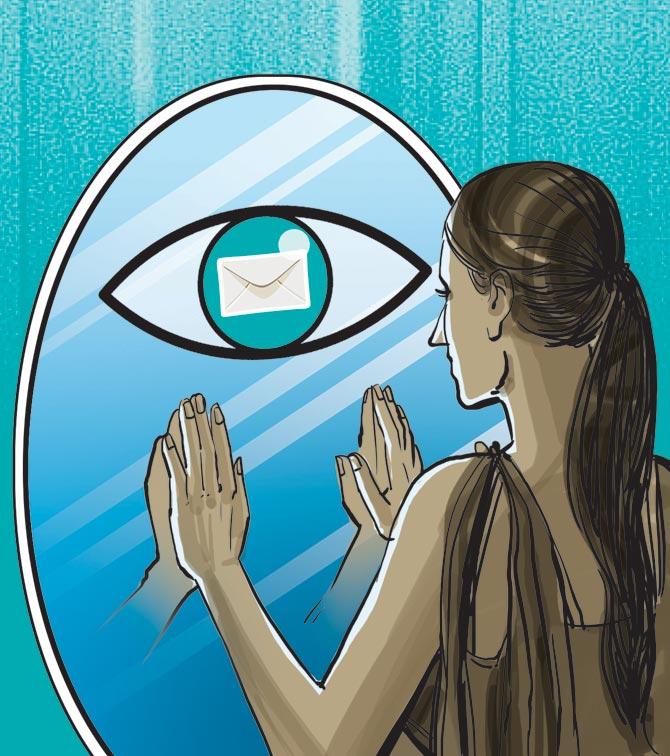If you live online as much as offline, you will not have missed those teal speech bubble post-its on social media, as people shared their Sarahah messages


Illustration/Ravi Jadhav
ADVERTISEMENT
 If you live online as much as offline, you will not have missed those teal speech bubble post-its on social media, as people shared their Sarahah messages. For those who have missed it, Sarahah is a new app which allows users to receive anonymous messages from within their online-offline communities, which are "honest".
If you live online as much as offline, you will not have missed those teal speech bubble post-its on social media, as people shared their Sarahah messages. For those who have missed it, Sarahah is a new app which allows users to receive anonymous messages from within their online-offline communities, which are "honest".
In its short life, the app has already churned up all the human uses other digital media facilitate: declarations of love and desire, shy compliments, fulsome praise and fulsome abuse, meanness, bullying, misogyny, violence and, doubtless, for some, the painfulness of just being ignored.
The constant reiteration of such platforms rooted in anonymity – in the past we've had Ask.fm and Secret - points to our complex relationship with seeing and being seen, our constant engagement with concealing and revealing ourselves.
A song by The Beatles goes, "Look into these eyes now, tell me what you see/It is no surprise now, what you see is me/Tell me what you see!" As these lyrics tell us, the need to know who we are, but also, to have that confirmed by being witnessed by another's gaze endlessly absorbs human beings.
It is not a simple need and plays out through our need for diverse relationship networks. By undertaking various roles — husband, girlfriend, teacher, employee — sometimes repeatedly, often with different results on each repetition, we perform different versions of ourselves to different people. We hide, hoping to be found or at least looked for. We create art, as if to play out different ideas of ourselves. In each of these iterations, we hope to reveal ourselves as multifaceted to ourselves. In seeing and being seen, there is a certain precarious intimacy, as well as an innocent hope, that even the most critical gaze will be underwritten by love and encourage us that life is worth living.
As human beings we also acknowledge that we have varying degrees of control over how others see us. Hence there are parts of us that are public — for everyone to see, and so, potentially for everyone to judge; parts that are personal — which are known to many but not experienced by all in equal measure, viewed with unpredictable approval, snarkiness or dislike; and private — which we very selectively share with a few, whose gaze we trust and court.
These parts are not sealed off from each other but exist in a dynamic relationship with each other. How others see one part of us, sometimes modifies other parts of ourselves. It is when our control over which part of ourselves we designate and reveal as private or public is taken away from us that we experience some degree of violence. We also experience this violence when we feel that others have deliberately not seen us in the way we hope.
Some fear that such digital platforms propel addiction to validation, narcissism or toxic vulnerability. But, in fact, the digital world throws up ever more opportunities for potential self-discovery, a kind of leela of anonymity and identity. In this our ability to see and be seen, to invite others into this interplay, to brave and survive scrutiny, to see and listen as much as be listened to or seen, can provide suggestive answers to the question 'Who am I?' in a way that national, religious, class, sexual and gender identities cannot encompass.
Paromita Vohra is an award-winning Mumbai-based filmmaker, writer and curator working with fiction and non-fiction. Reach her at www.parodevipictures.com
 Subscribe today by clicking the link and stay updated with the latest news!" Click here!
Subscribe today by clicking the link and stay updated with the latest news!" Click here!






